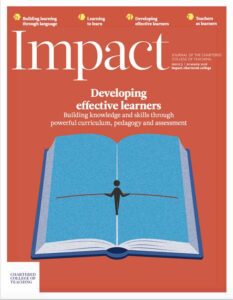Jigsaw reading – how can a puzzle engage the social brain?

‘Reading is boring’ – a comment that I have heard numerous times from a variety of students, and a concept that I find incredibly difficult to comprehend, especially as a voracious reader myself. This receptive skill is an integral part of daily life and, as an English as an additional language (EAL) teacher, I believe it is important that every lesson combines both receptive (listening and reading) and productive (writing and speaking) skills to facilitate learning. If a student believes that ‘reading is boring’ then this will have an impact on their attitude and approach in lessons. The challenge then is to try to make reading more interesting, not just through the topics but within the actual reading process. As reading is a passive activity, making it a more active exercise would no doubt assist this transformation. If a student is engaged in an activity, they will be more motivated to pay attention and to learn. In the 2008 article ‘Beyond learning stylesTheories relating to the idea that individuals learn best in different ways and teaching should be tailored to their learning styles – these have been widely debunked by research: Brain-based research and English language learners’, Judy Lombardi explains that brain-based research that has primarily been carried out with non-EAL learners offers new and innovative ways through which we can engage and inspire EAL learners. She suggests that the brain is a social brain and, as such, responds well to social engagement and oral sharing. Activities that facilitate this social engagement and cooperative learning improve learning for all pupils, including those with EAL needs.
The brain is innately geared to find meaning in what is being taught. When the learner understands the purpose of the task, the brain will recognise the meaning and value and the student will be more deeply engaged; the learning will be embedded in a context that is meaningful and, as such, will enhance memory and promote understanding (Lombardi, 2008). We therefore want to devise classrooms that will stimulate attention and maximise cognitive engagement so that our pupils learn effectively.
A technique called jigsaw reading is a collaborative exercise that combines both receptive and productive skills as well as requiring active input. It is a form of cooperative learning developed from the Jigsaw Classroom (Aronson and Patnoe, 2011). Jigsaw reading can be used to lighten a heavy text by breaking it into smaller, more manageable chunks or by using texts on similar topics to provide a broader context of a subject. The jigsaw reading process involves dividing a class into small groups of students. Each group is given a piece of text or different texts on the same topic, with a task to complete. The set task could be something as simple as answering questions or writing a summary about the text. The students then work in partnership within their group, and each member in the group becomes an ‘expert’ on their text. The original groups are then rearranged to create new groups: for example, with three groups of three students – group A, group B and group C – these would now become group one (ABC), group two (ABC) and group three (ABC). Each ‘expert’ in the new groupsdeliversthe information about their original textwhile also gaining access to the information from their new group members, which enables them to complete a new group task, thus actively participating and turning a piece of text into a collaborative exercise involving receptive and productive skills. The use of the jigsaw format ensures that every student has the opportunity to become socially involved and to take on the roles of both student and teacher as they interact with one another (Lom, 2012).
Watching and facilitating jigsaw reading is immensely satisfying as a teacher. Having used this activity with various students from different countries and with diverse backgrounds, as well as on a training exercise with colleagues, the success of this exercise is immediate: instant engagement with the text followed by collaboration on the task. For real, enduring learning to occur for all students, we need to provide opportunities for them to maximise their cognitive engagement. Through the application of the jigsaw reading technique, we can enhance pupil motivation and engagement on the task and, as such, improve the conditions through which learning happens.
The jigsaw reading activity is suitable for all learners, not just EAL students.Humans are an inherently social species; all children acquire an efficient system of social communication very early in development. Every learner is a social learner and we can capitalise upon this by incorporating teaching strategies – such as the jigsaw reading method – that bring an inherently social element into the teaching activity.
References
This article was published in May 2018 and reflects the terminology and understanding of research and evidence in use at the time. Some terms and conclusions may no longer align with current standards. We encourage readers to approach the content with an understanding of this context.










